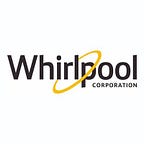‘Order Up!’ (and up and up)
Whirlpool Corp. Delivered Innovative Meals to Astronauts
Whirlpool Corporation completed 300 separate space-related government contracts between 1957 and 1973, allowing it to pioneer substantial development of food, waste management and personal hygiene systems used in the Air Force’s Mercury mission and NASA’s Gemini, Apollo and Skylab missions, ending with Whirlpool Corporation food and equipment landing on the moon. At the peak of the space effort, 60 Whirlpool Corporation people were employed in designing, developing, preparing and packaging space food or working on other facets of the program. In late 1973, Whirlpool Corporation’s work on the Space Kitchen was phased out. In closing out the program, samples of the various items the company produced were donated to the Smithsonian Institution for display in their new Space Center.
Because of the zero-gravity conditions, Whirlpool Corporation had to design food and food-delivery systems, the latter consisting of tubes that would allow the American astronauts to basically inject the food into their mouths. Crumbs, for example, were forbidden, as they would float throughout the space module and potentially contaminate the technology.
Whirlpool Corporation’s innovative work helped build public understanding of and confidence in the space effort. Moreover, the company cemented its reputation for ingenuity — and through those early experiments it learned a great deal that eventually enhanced its competitiveness in adapting and customizing appliances around the world.
For more information on the Space Kitchen, visit our archives:
What did the astronauts eat?
Space Food?
